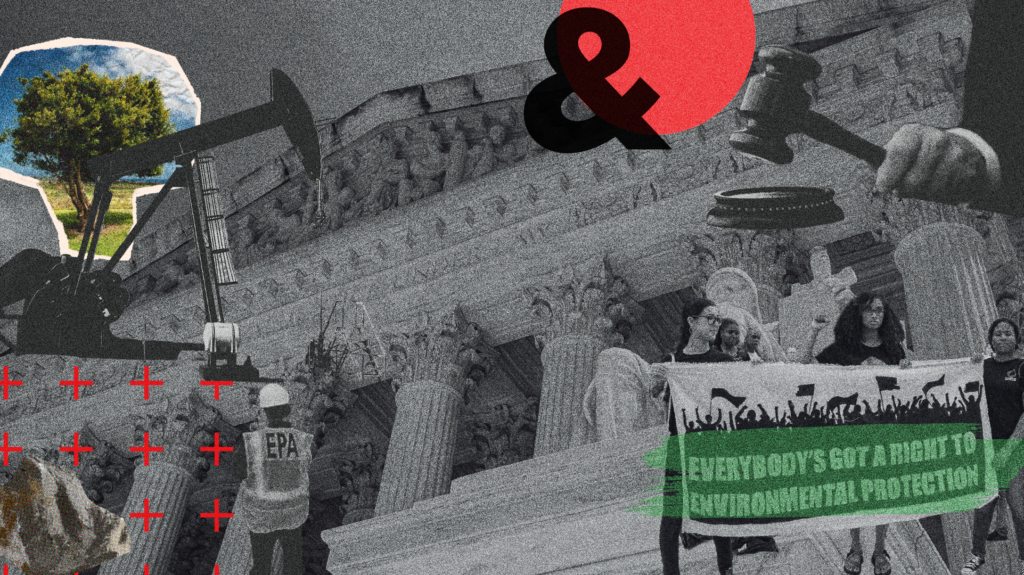Chevron Deference, Explained
Imagine it’s your first day of high school. You head to your first class—biology—eager to meet your teacher and new classmates. However, upon entering, you find the school principal standing at the front of the room. Uncertain, you take your seat. As the class begins, it becomes clear the principal struggles with the technical material, relying heavily on notes and unable to answer questions from classmates.
Just as the unexpected role of a high school principal in a biology class underscores the importance of specialized expertise, the Chevron doctrine similarly highlights the reason why, for decades, the judiciary deferred to regulatory agencies’ specialized knowledge in interpreting and implementing laws.
Historical Context and Evolution of Chevron Deference
The Chevron doctrine, born during the Reagan administration, initially aimed to streamline regulatory interpretation by mandating courts to defer to federal agency expertise when statutes were ambiguous. This principle became a cornerstone of administrative law, shaping pivotal decisions across sectors crucial to public welfare, from healthcare to environmental protection. For example, in healthcare, Chevron guided interpretations of the Affordable Care Act, ensuring consistent implementation nationwide.
Virtually everything we use is regulated—our daily products, food, water, air quality, gun safety, healthcare, and more. Regulatory agencies ensure public safety through decisions grounded in specialized expertise. Key federal regulatory agencies include the Occupational Safety and Health Administration (OSHA), Food and Drug Administration (FDA), Federal Trade Commission (FTC), Center for Disease Control (CDC), Federal Aviation Administration (FAA), and the Environmental Protection Agency (EPA). Under Chevron deference, the Environmental Protection Agency (EPA) was empowered to implement stringent air quality standards under the Clear Air Act, safeguarding public health from harmful pollutants. Agencies like the California Air Resources Board (CARB), a client which D&A proudly supports, have been at the forefront of these efforts, setting the standard for effective air and climate programs that protect the environment and public health.
“Chevron deference, or Chevron doctrine, is an administrative law principle that compelled federal courts to defer to a federal agency’s interpretation of an ambiguous or unclear statute that Congress delegated to the agency to administer.”
Implications of Overturning Chevron Deference
On June 28, 2024, the Supreme Court overturned the Chevron doctrine in a 6-3 vote in the case Loper Bright Enterprises v. Raimondo. This decision threatens to undermine the ability of regulatory agencies to enforce critical public protections, leaving statues open to interpretation by federal courts rather than experts in the field.
Without Chevron deference, the EPA’s ability to enforce air quality standards may be compromised, potentially destabilizing long-standing environmental projections. Vulnerable communities, who already bear the brunt of pollution and climate change, will be disproportionately impacted. As an equity-first communications firm, D&A understands that these shifts not only threaten the environment but als exacerbate existing social inequities.
Impact on Vulnerable Communities
While some critics argued that Chevron deference introduced economic instability by allowing shifting interpretations of the law across administrations, the long-term effects of its removal could be far more destabilizing, especially for underserved communities. These communities rely on robust regulatory frameworks to ensure access to clean air, safe water, and healthcare—essentials that are now at greater risk.
CARB’s work, for instance, has been instrumental in reducing greenhouse gas emissions and protecting public health in California. The loss of Chevron deference could make it more difficult for agencies like CARB to implement innovative solutions that combat climate change and protect vulnerable populations.
Looking Ahead: The Role of Equity in the Courts
The overturning of Chevron deference raises urgent questions about the future of administrative law and the protection of public welfare. In response, the Biden administration has proposed reforms to ensure that the courts remain balanced and reflective of the public’s needs, particularly in light of recent decisions that have shifted power away from regulatory agencies.
These court reform efforts are part of a broader strategy to restore public trust in the judiciary and ensure that it serves the interests of all Americans, not just a select few. However, meaningful change will require sustained advocacy and a commitment to equity in all aspects of governance.
At D&A, we believe that equity must be at the center of all policy decisions, especially in times of legal and regulatory uncertainty. As we continue to navigate this evolving landscape, our commitment to advocating for social justice, environmental protection, and democratic accountability remains unwavering.
“The Arc of the Moral Universe is Long, But it Bends Toward Justice.” – Martin Luther King, Jr.
